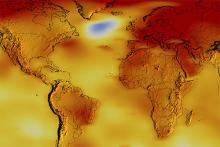A team led by researchers at Penn State developed a new method to evaluate cracks that destabilize ice shelves and accelerate loss of sea ice.
Eight Penn State graduate students, including two from EMS, received U.S. National Science Foundation (NSF) Graduate Research Fellowships for the 2025-26 academic year.
A team of scientists led by Penn State has found a weakening AMOC impacts not just the ocean but also the atmosphere, and that these two factors may contribute equally to the cold anomaly.
- Hometown:
- Hometown:
- Hometown:
- Hometown:
- Hometown:
Penn State researchers used two-dimensional (2D) materials, which are only an atom thick and retain their properties at that scale, unlike silicon, to develop a computer capable of simple operations.





